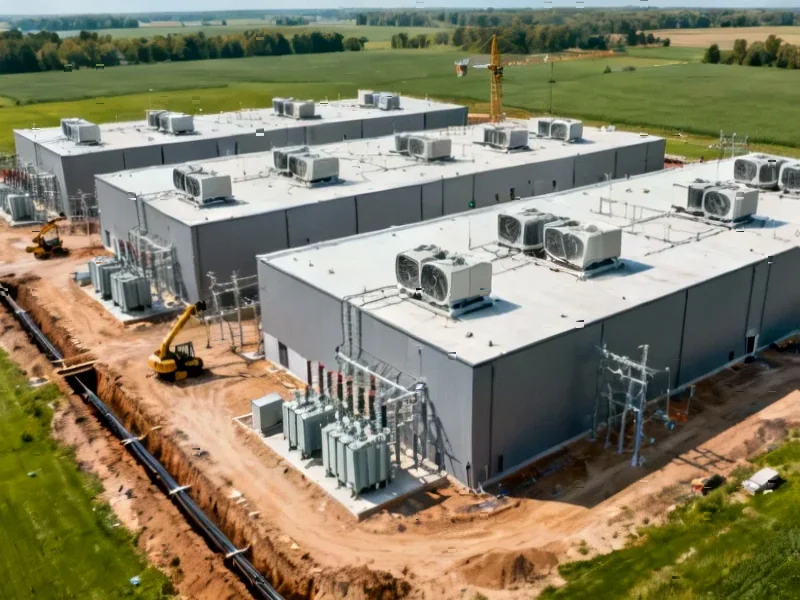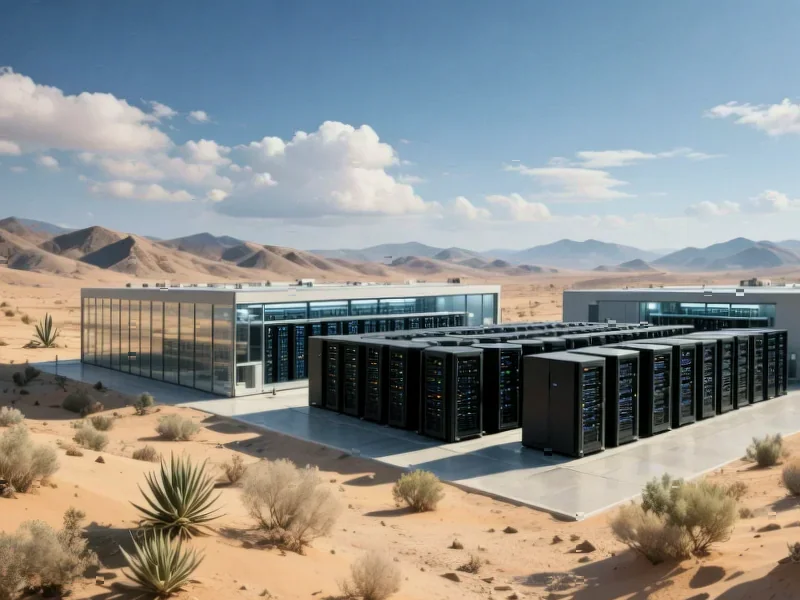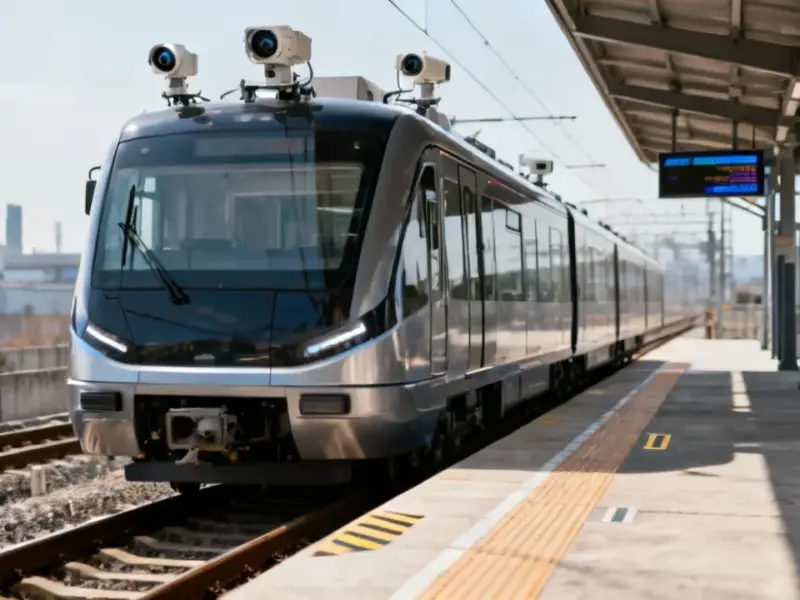According to TechRepublic, OpenAI is partnering with Oracle and Related Digital on a $7 billion hyperscale data center campus in Saline Township, Michigan, with groundbreaking scheduled for early 2026. The 2.2-million-square-foot facility, internally dubbed “The Barn,” will span 250 acres and deliver more than a gigawatt of computing capacity as part of OpenAI’s broader $450 billion Stargate initiative. The project promises 2,500 union construction jobs, 450 permanent high-skill roles, and another 1,500 community jobs, backed by $14 million in local investments and tax breaks under Michigan’s 2024 data center law. DTE Energy will provide an estimated 1.4 gigawatts of power through existing grid capacity supported by developer-funded battery storage, with the project aiming for LEED certification and 90% renewable energy sourcing. This massive investment signals a fundamental shift in how AI infrastructure is being deployed across America.
The Midwest’s Digital Reindustrialization
What makes this project particularly significant isn’t just the scale, but the location. For decades, the technology industry concentrated its infrastructure investments in traditional hubs like Silicon Valley, Northern Virginia, and Texas. By choosing Michigan, OpenAI and its partners are making a strategic bet that the future of AI compute needs to be distributed across America’s industrial heartland. This represents a fundamental rethinking of where technological innovation should be physically located. The Midwest offers several advantages that traditional tech hubs can’t match: established industrial workforces, existing energy infrastructure, and political willingness to offer substantial incentives that coastal states might hesitate to provide.
The Energy Reality Check
The energy requirements here are staggering—1.4 gigawatts is enough to power approximately 1 million homes, and this is just one campus in a planned eight-gigawatt nationwide buildout. While DTE Energy claims the setup will prevent strain on the grid and shield residents from higher rates, the reality is more complex. Large-scale AI compute demands consistent, massive power loads that traditional renewable sources struggle to provide reliably. The Michigan Environmental Council’s concerns about new gas generation undermining clean energy goals highlight a fundamental tension that the AI industry hasn’t solved: how to reconcile exponential compute growth with environmental sustainability.
Winners and Losers in Rural Transformation
The local impact in Saline Township reveals a classic pattern of technological progress versus community preservation. While the project brings thousands of jobs and millions in local investment, it fundamentally transforms the area’s rural character. The zoning dispute that ended in court, with Related Digital suing the township for exclusionary zoning, shows how even communities that initially resist large tech projects can be overridden by economic and legal pressure. The preservation of 700 acres of farmland and the historic red barn represents a compromise, but it’s unclear whether these gestures will meaningfully preserve the community’s identity or simply serve as aesthetic concessions in a fundamentally transformed landscape.
The Coming AI Infrastructure Divide
OpenAI’s Stargate initiative represents an infrastructure arms race that will create clear winners and losers beyond Michigan. States with favorable tax policies, available land, and cooperative utility providers will become magnets for AI investment, while others risk being left behind. The $450 billion scale of the full Stargate buildout suggests we’re entering an era where AI infrastructure spending rivals traditional industrial investment. This creates a new form of technological federalism where state-level decisions about tax incentives, energy policy, and zoning will determine which regions benefit from the AI boom.
What This Means for AI Accessibility
For enterprises and developers, this massive infrastructure buildout has contradictory implications. On one hand, partnerships like the one between OpenAI and Oracle suggest that leading AI companies are preparing for unprecedented scale, which could eventually translate to more accessible and affordable AI services. However, the enormous capital requirements also create significant barriers to entry, potentially consolidating advanced AI capabilities among a handful of well-funded players. The companies that control this infrastructure will wield enormous influence over the direction of AI development, pricing, and accessibility for years to come.
The Long Game in AI Infrastructure
Looking beyond the immediate economic impact, this project represents a strategic pivot in how technology companies approach physical infrastructure. Rather than treating data centers as cost centers to be minimized, OpenAI and its partners are embracing them as strategic assets that require massive, long-term investment. The choice of Michigan—with its manufacturing heritage, skilled workforce, and central location—suggests these companies are thinking in decades rather than quarters. This infrastructure-first approach may become the new normal in the AI era, where computational capacity becomes the primary competitive advantage rather than algorithms alone.




